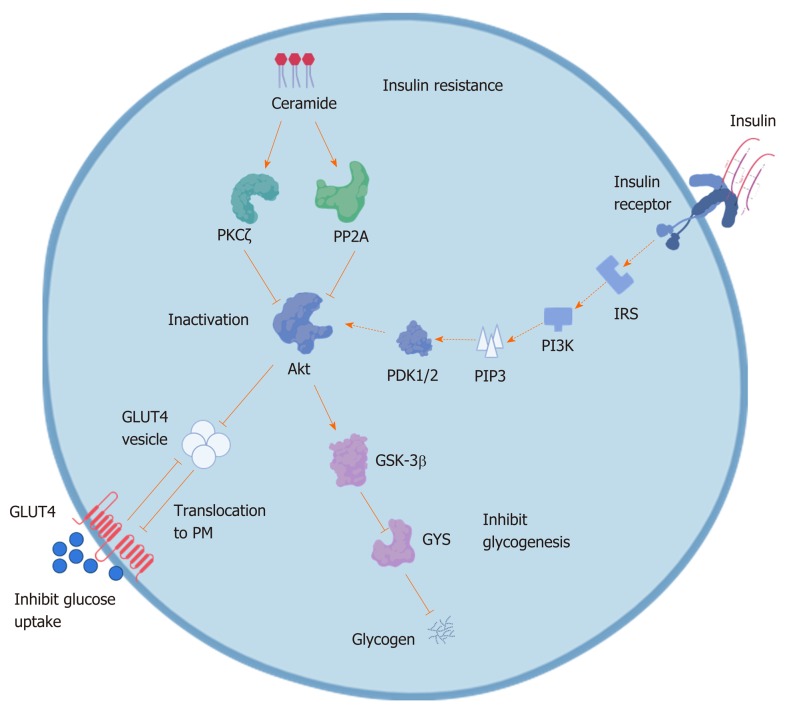Figure 3.
The mechanism of ceramide inducing insulin resistance. Ceramide inactivates protein kinase B (Akt) through stimulating the activity of protein kinase Cç isoform and protein phosphatase 2A which phosphorylates and inhibits the translocation of Akt. The inactivation of Akt prevents from translocation of glucosetransporter4 vesicle to plasma membrane, resulting in inhibiting glucose uptake. Simultaneously, inactivated Akt in turn activates glycogen synthase 3, leading to inactivation of glycogen synthase and thus inhibition of glycogen synthesis and resulting in insulin resistance. PKB: Protein kinase B; PKCç: Protein kinase Cç; PP2A: Protein phosphatase 2A; GLUT4: Glucosetransporter4; PM: Plasma membrane; GSK-3: Glycogen synthase 3; GYS: Glycogen synthase; IRS: Insulin receptor substrate; PI-3K: Phosphoinositide 3-kinase; PIP3: Phosphatidylinositol-3,4,5-trisphosphate; PDK1/2: 3-phosphoinositide-dependent protein kinase 1/2.

